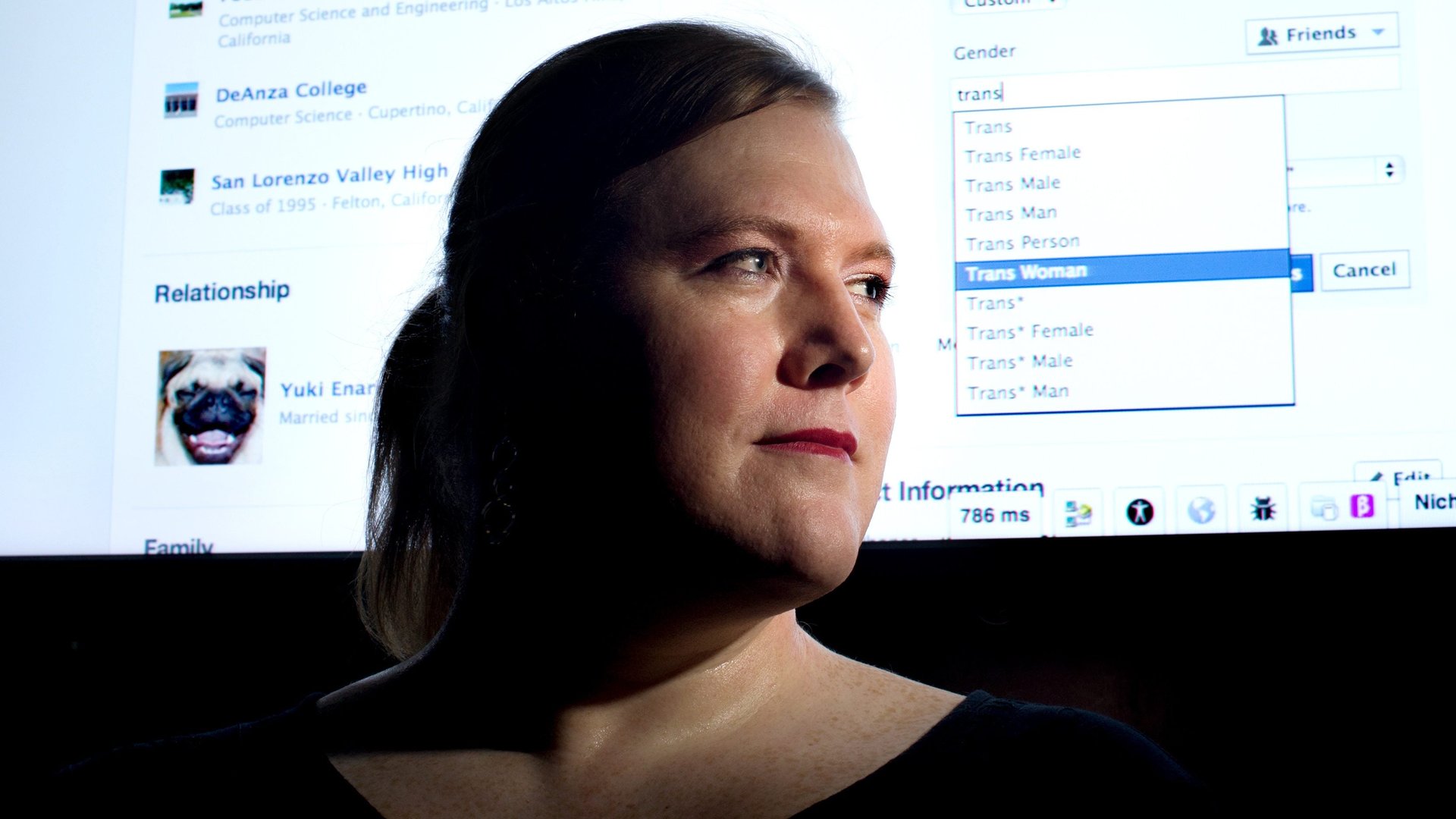Gender pronouns that are neither male nor female are quietly catching on
In Britain, 20-year-old Maria Munir made headlines when they came out as non-binary, a gender identity that is neither male nor female, to US president Barack Obama in front of a packed hall in April. It was the first time Munir had publicly identified as non-binary. By doing so, they hoped to raise issues that affect transgender and gender-nonconforming communities.


In Britain, 20-year-old Maria Munir made headlines when they came out as non-binary, a gender identity that is neither male nor female, to US president Barack Obama in front of a packed hall in April. It was the first time Munir had publicly identified as non-binary. By doing so, they hoped to raise issues that affect transgender and gender-nonconforming communities.
While British law only recognizes male and female genders, the government took an incremental step to be more inclusive on Nov.9 by instructing prisons to recognize fluid and non-binary genders. Earlier this month, Metro Bank, a British retail bank announced it would allow customers to choose a title that is neither male nor female, offering the non-binary “Mx” prefix on its forms.
In the US, an Oregon circuit court went much further, ruling in June that Portland resident Jamie Shupe could change their legal gender to non-binary. Shupe is widely believed to be the first legally non-binary person in the US. The ruling comes as a number of institutions invite people to claim their preferred pronoun.
The English language is quietly becoming more inclusive; no longer are people restricted to “he” or “she” pronouns. The 127-year-old American Dialect Society, an authoritative voice on American English, named the singular “they,” as 2015’s word of the year (it was also Quartz unofficial nomination for word of the year). “While editors have increasingly moved to accepting singular they when used in a generic fashion, voters in the Word of the Year proceedings singled out its newer usage as an identifier for someone who may identify as ‘non-binary’ in gender terms,” the society noted in a statement.
Last year, the University of Vermont gave students the option to not only select their own pronouns (paywall), but also choose a new first name, regardless of whether its been legally changed. Harvard followed suit a few months later, allowing students to choose from a range of pronouns—“He, She, Ze, E, They”—during the registration process.
Tech companies have also jumped on board. In 2014, Facebook offered users more than 50 custom gender identifiers. An update on dating app Tinder this week gave users a new, open-ended gender field on people’s profiles.
The movement to recognize a diverse range of genders is also expanding beyond the English-speaking world. Sweden added a gender-neutral pronoun, hen, in the new edition of the country’s official dictionary in 2015; joining its binary counterparts han (he) and hon (she). On Nov.7, the Canadian government introduced a border document that gave foreign visitors the choice to identify as male, female or other.
But not everyone has been welcoming of this change. A Canadian professor sparked controversy earlier this month when he refused to use gender-neutral pronouns, and slammed a campus culture where “social justice warrior, left-wing radical political activists” limit free speech.